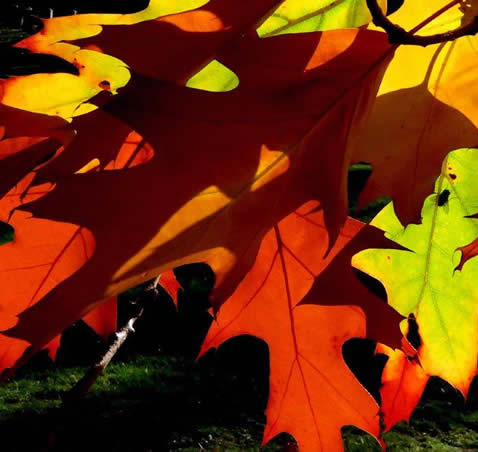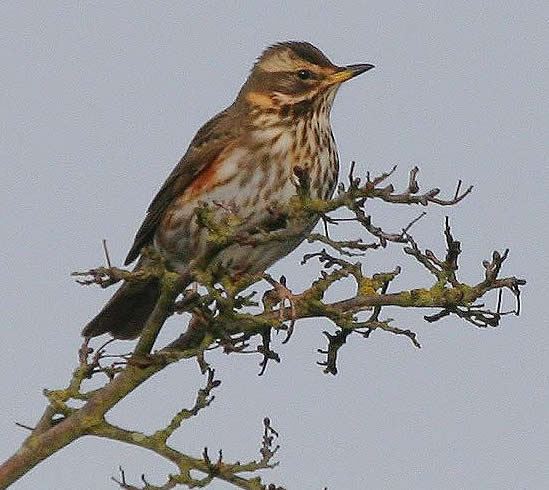Wild Essex
17 – 19 November 2020
Three days in the field with Honeyguide leader Chris Gibson
This web page is kept 'on file' so we are ready should we be able to run this break in any November.
* Dates noted are days in the field. Participants will arrive on the previous evening, 16 November, and leave on the morning of 20 November. Was fully booked, now cancelled because of Essex being put into tier two (high COVID alert level).
Enjoying wildlife in the UK is the 'new normal' given the difficulties of travelling overseas in 2020/21, and this break in coastal Essex follows the pattern of our successful Norfolk breaks. The plan is that participants book the hotel themselves, and Honeyguide's Dr Chris Gibson will be your nature guide.
Chris has designed this break so it is suitable both for those using public transport as well as those with their own vehicles.
Wild Essex in November
From birds to botany, galls to geology, and landscape history to modern conservation, this tour will lift the lid on the sometimes surprising ‘wild side of Essex’.
During three full days of guided nature watching, we will visit a wide variety of local wildlife habitats with the minimum of driving and/or use of public transport, so to make best use of the short daylight hours. Our journey will take us from ancient woodland and parkland to salt marshes and estuaries, restored gravel workings to some of the only sea cliffs in Essex.
In November, birds will be a major focus, and given good weather, late season insects and flowers together with fungi and wonderful trees will help make this a memorable trip, while I will be filling in the conservation story based upon Chris's 30 years’ professional experience protecting the region’s wildlife.
Included in the holiday are two early evening slide presentations.

Autumn colours: red oak, one of the spectacular non-natives of Wivenhoe Park; Fly agaric; hawthorn haws, one of the many fruits of the autumn.
Itinerary
Day 1: arrival
Day 2: WIVENHOE PARK AND THE UPPER COLNE
We start with a guided walk around the hotel’s beautiful grounds, to help you get the most out of the immediate locality in any spare time later on in the week. The 18th century landscaped Wivenhoe Park is noted for its important and interesting trees from around the world, some of which should still be in good autumn colour, and hopefully a rich variety of fungi will be in evidence.
Bird may include woodpeckers, winter thrushes, with goosanders, siskins and redpolls around the lake.
We then embark on a circular walk of some 8km through ancient woodland, scrub and grassland, reedbeds and saltmarshes, habitats which comprise the Colne Local Nature Reserve: Ferry Marsh, Wivenhoe Wood, and Lower Lodge meadows. Having looked for the rare flowers of Wivenhoe’s West Quay, it will then be into the King George V field for more magnificent trees, especially Holm Oaks, perhaps a range of grassland fungi, and an ‘official’ comfort stop.
The return walk is along the earthen river wall, alongside the narrow upper estuary where water birds are close (though fewer than we shall see downstream on the final full day). As evening draws in barn owls could become active and a peregrine often frequents this stretch.
Half hour (or so) slide presentation on ‘Wildlife & Conservation of the Essex Coast’.
Day 3: THE NAZE AND WALTON BACKWATERS
Much of the day will be spent on the headland of the Naze itself, exploring the bushes for migrant birds, perhaps coastal plants and insects, the beach for waders, wildfowl and gulls, and the cliffs for their picturesque, internationally significant geology, revealing the story of the past 50 million years.
Heading into the embayment of Hamford Water (also known as the Walton Backwaters – or to afficionados of Arthur Ransome ‘Secret Water’), we will be among low sand dunes and salt marsh habitats, the latter in their last flush of autumn colour.
And once alongside the estuary, birds (wildfowl, waders and raptors, and many more) will come into their own, perhaps with an accompaniment of the local harbour and grey seals, as we return to the car park along the sea wall around Walton Hall Marshes.
Brent geese, icon of the Essex coast.
Day 4: COLNE ESTUARY AND COCKAYNES RESERVE
After a scan of the inner estuary for waders and other birds, and scouring the shipyard for its rare plants, we have a choice of routes to the ‘Essex Alps’ with splendid views over the wider estuary. From there, we go into the Cockaynes Reserve, an exceptional example of ‘Life after gravel’, now a mosaic of ponds, heath, scrub and ancient woodland.
Heading towards the estuary, through small weedy fields, usually hosting finch flocks and winter thrushes, we will be at Alresford Creek as the rising tide is pushing estuary birds towards us. Black-tailed godwits and avocets are likely to be numerous, along with a whole range of other wildfowl and waders, hopefully flocks of brent geese, an icon of the Essex coast in winter.
Avocets on the Colne.
We will look in detail at the salt marshes, and Grange Wood which runs picturesquely down to the shore; and back to Wivenhoe along the sea wall, through grazing marshes covered in numerous large ant hills.
Evening: half hour slide presentation on some favourite Honeyguide destinations – a breath of summer in the midst of winter.
Day 5: departure.
Hotel
You will be staying at Wivenhoe House, a beautiful 18th Century four-star hotel, near to the pretty quayside village of Wivenhoe, and minutes from Britain’s oldest recorded town, Colchester
Wivenhoe House Hotel
It is set within Wivenhoe Park, famously captured on canvas by Constable, and now home to the University of Essex.
You can look forward to comfort, good food and full Covid-safety awareness.
En suite facilities.
For anyone who is interested, please contact us and we will email with details of how to book the special package arranged for Honeyguiders. This package includes breakfast and an evening meal. Arrangements for you to pick up food for lunch in the field are included in the plan. The hotel's practice is "No cancellation fee on all bedroom packages", to give reassurance should plans have to change e.g. due to coronavirus circumstances.
How to book
Step 1: tell us you wish to come. Step 2: book a room at the hotel.
No Honeyguide booking form is needed. Just keep us informed!
Hotel cost: the hotel's classic rooms are reserved for our group; upgrades are probably also available. You will be advised about prices and the booking process by email.
Holiday details
Days/dates: the dates above are three days in the field, Tuesday to Thursday. We expect most people to have four nights at the Wivenhoe Park: to arrive on the Monday and leave on Friday morning.
Price: £80 per day fee for your guide (including guide's expenses).
Deposit: none to Honeyguide. You will be invoiced after the break, or deposits already held by Honeyguide adjusted.
Local travel: in your car, or options by train. No minibus is being booked: this is partly for cost reasons, and partly for Covid-19 practicalities.
Maximum number (one guide): 5 plus guide, minimum number 3. The maximum is to follow current Covid-19 protocols of up to six people (full UK Government advice here). This number is a further constraint in that we cannot arrange to meet others locally e.g. an additional nature reserve guide.
Conservation project
Not included in the hotel or guide payment. We we will be happy to collect and pass on any donations e.g to Essex Wildlife Trust.
Guide
Dr Chris Gibson www.chrisgibsonwildlife.co.uk is both a
local resident in Wivenhoe, north Essex and an experienced tour leader. Chris regularly leads for Honeyguide in the Spanish Pyrenees and elsewhere.
Chris was a marine conservation specialist for Natural England. He is an outstanding all rounder, from birds through flowers to moths, recognised as a ‘naturalist of distinction’ by the British Naturalists’ Association. Photos on this page by Chris Gibson.




